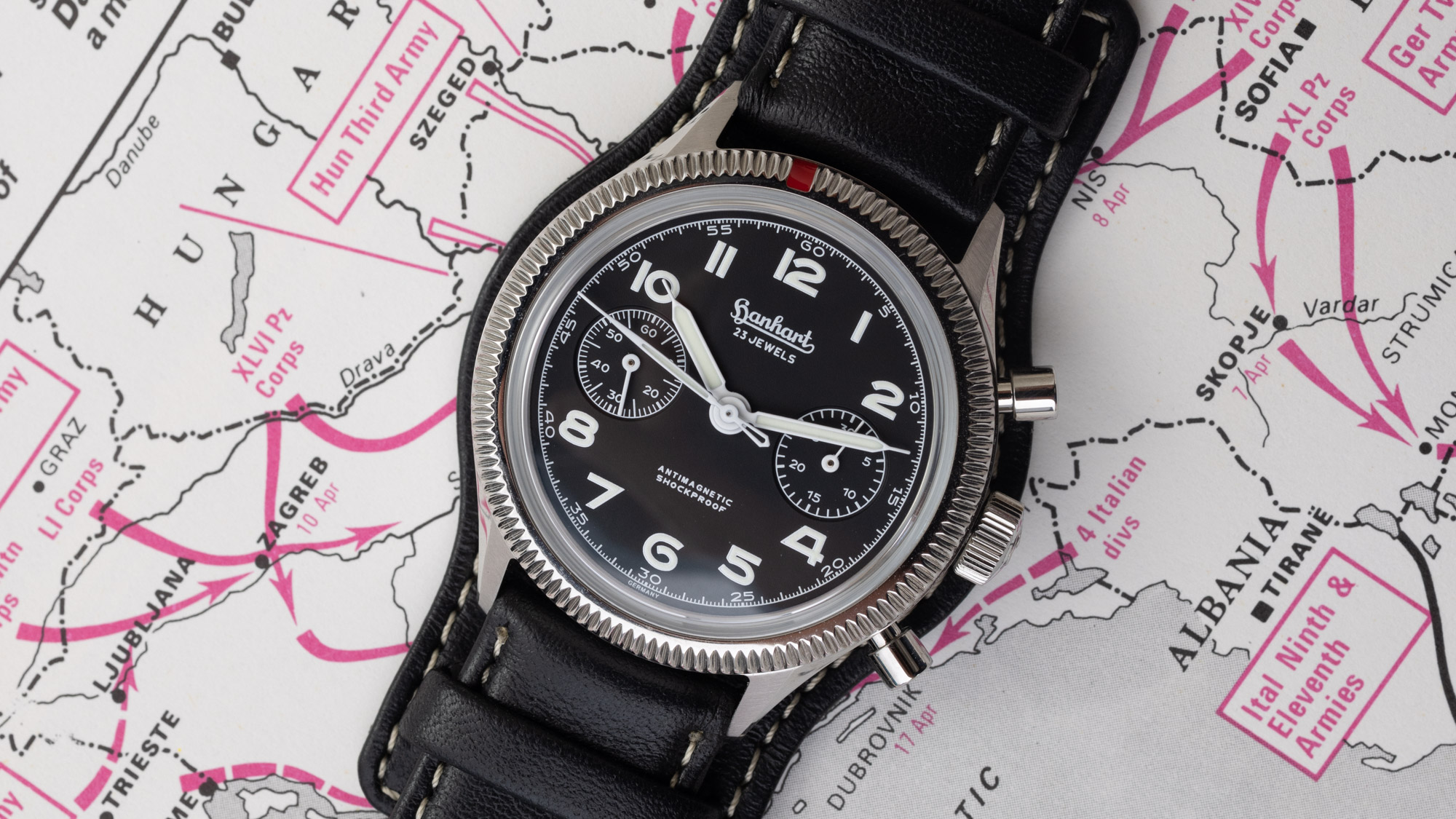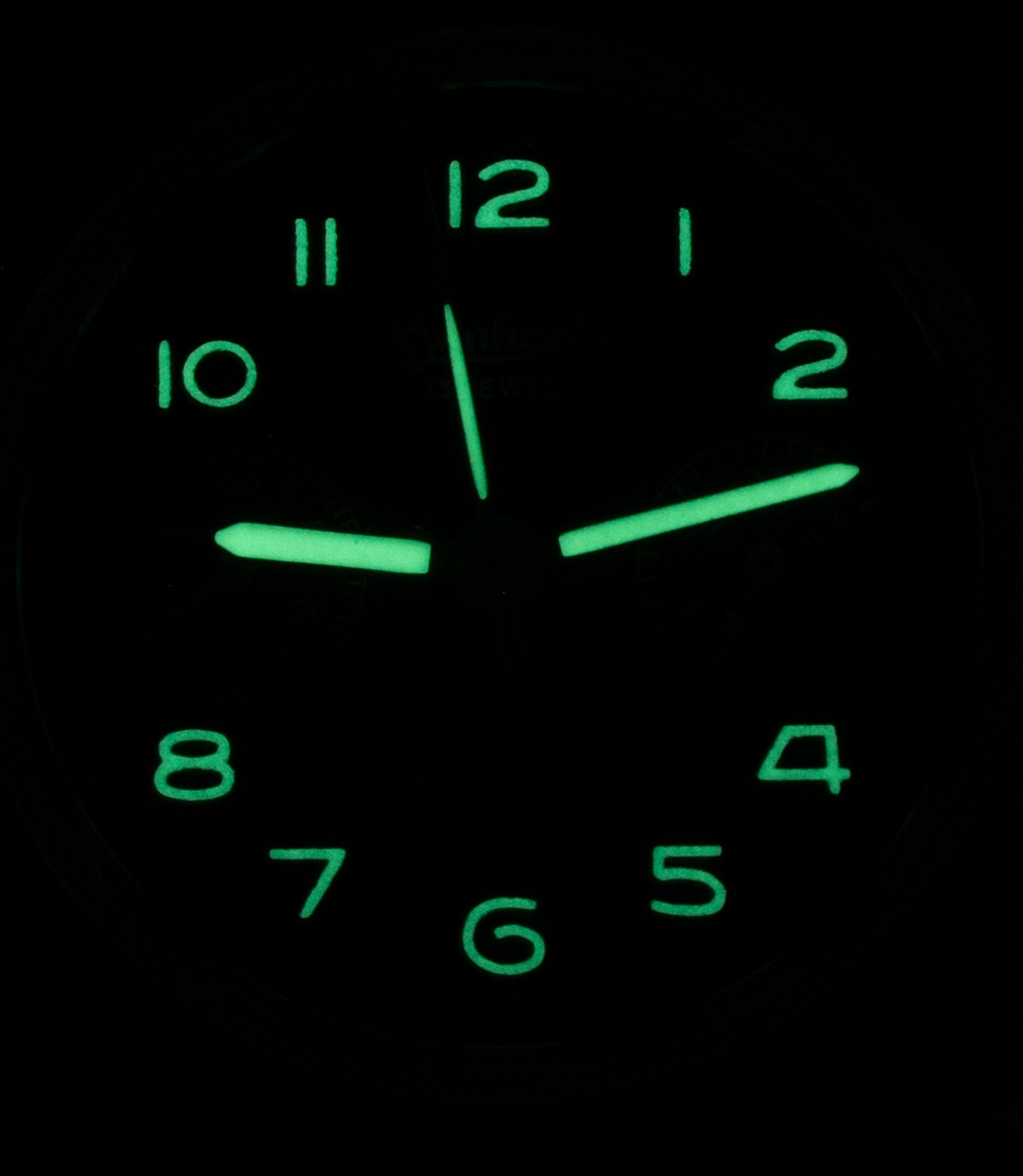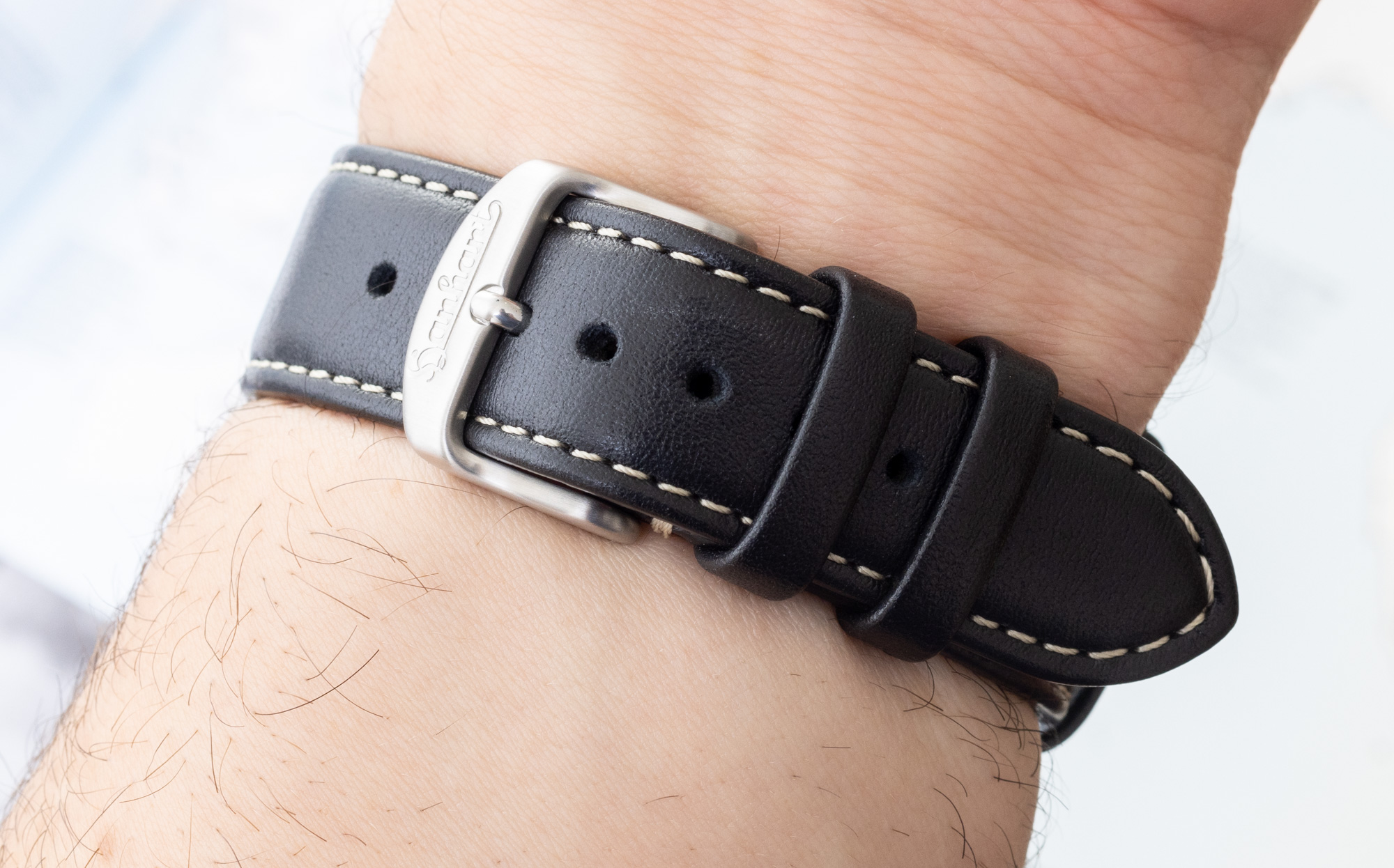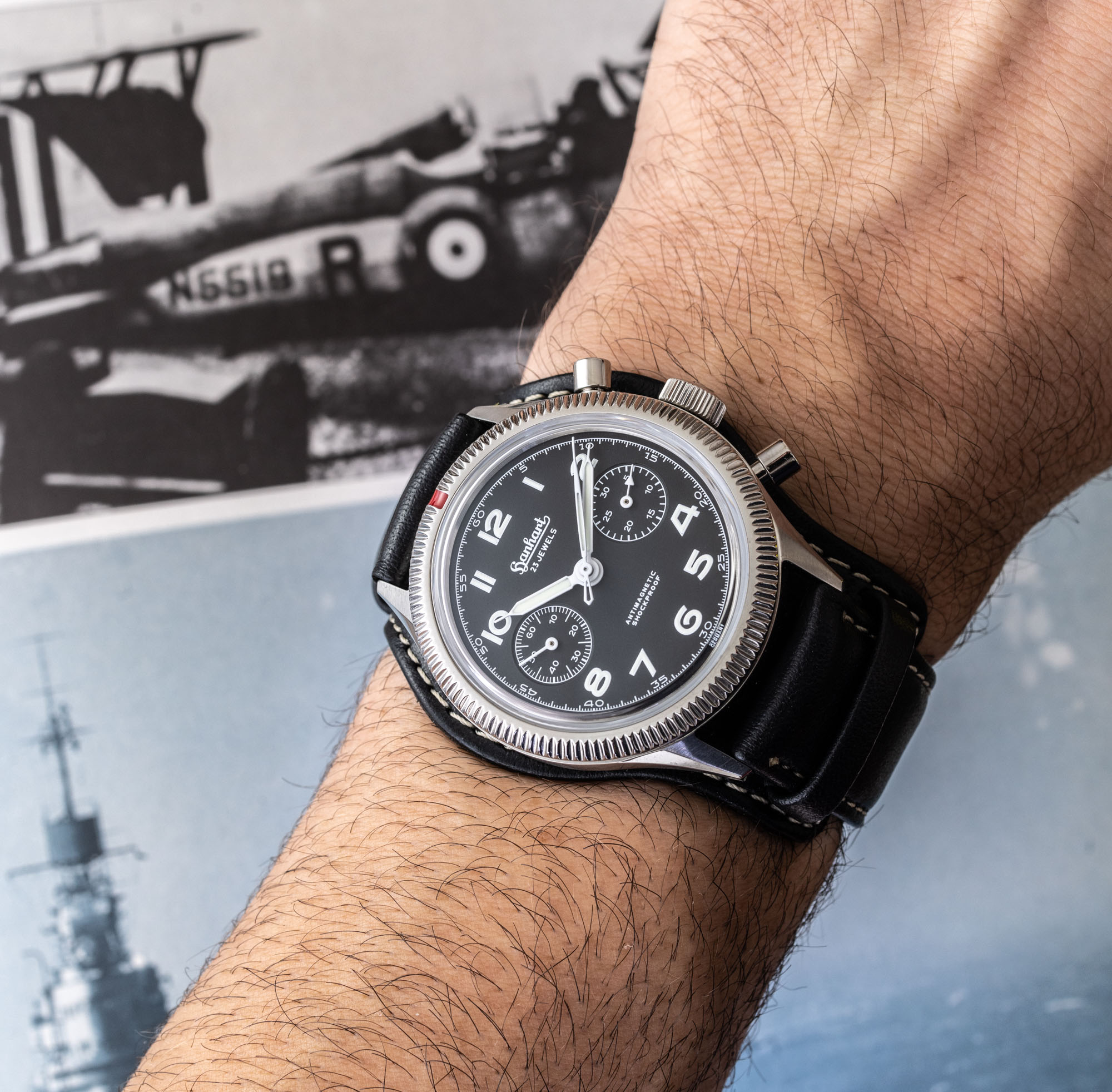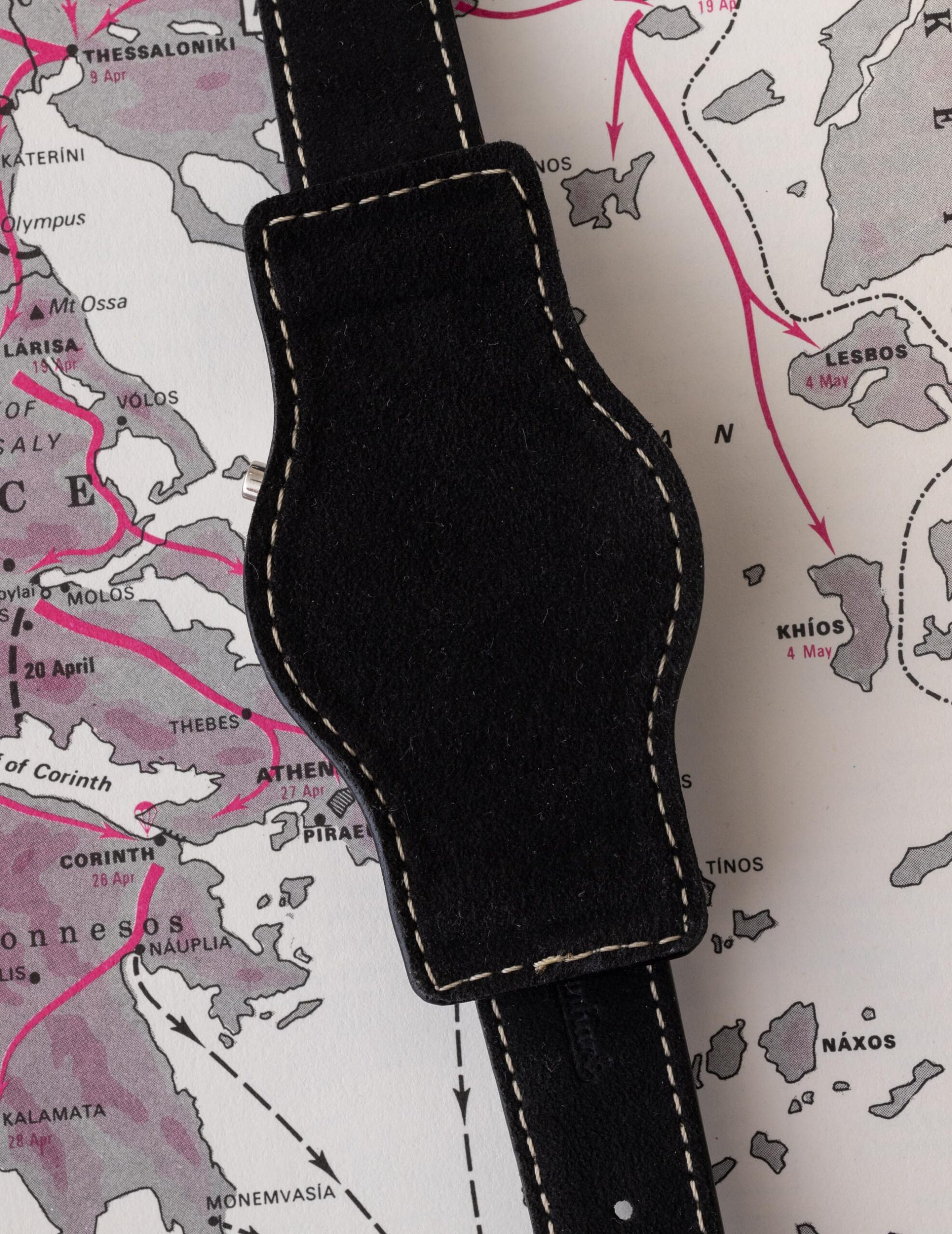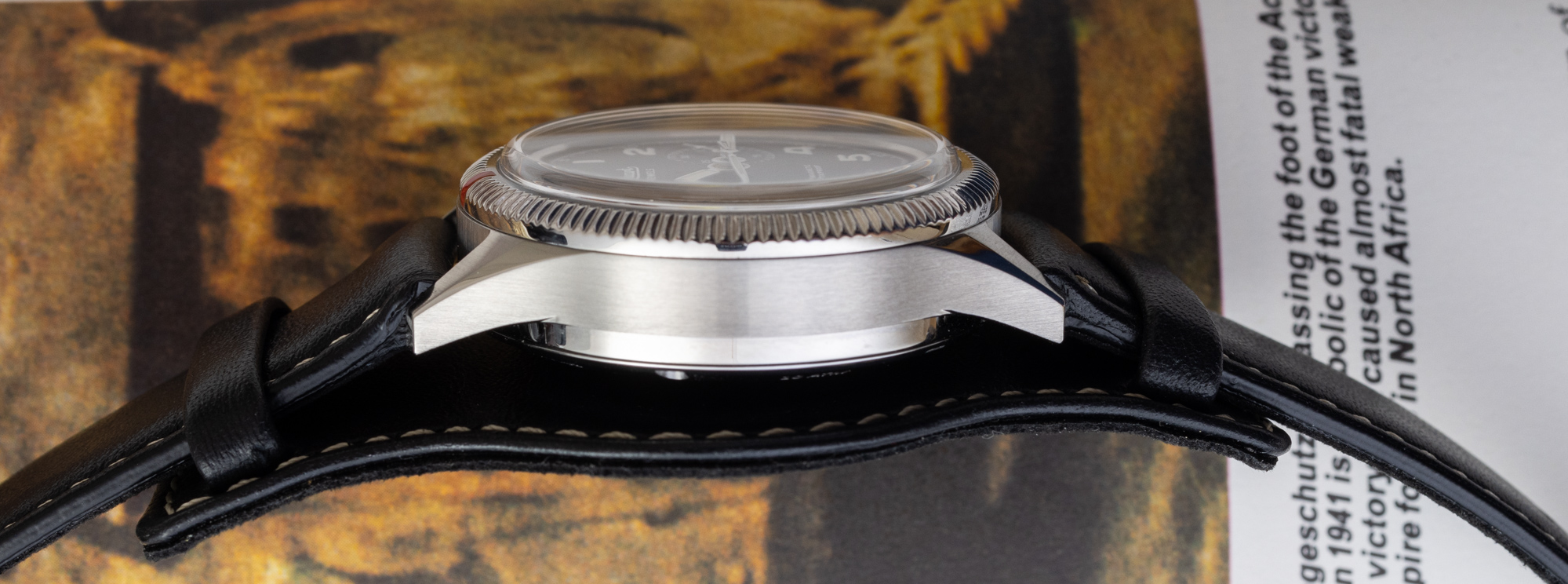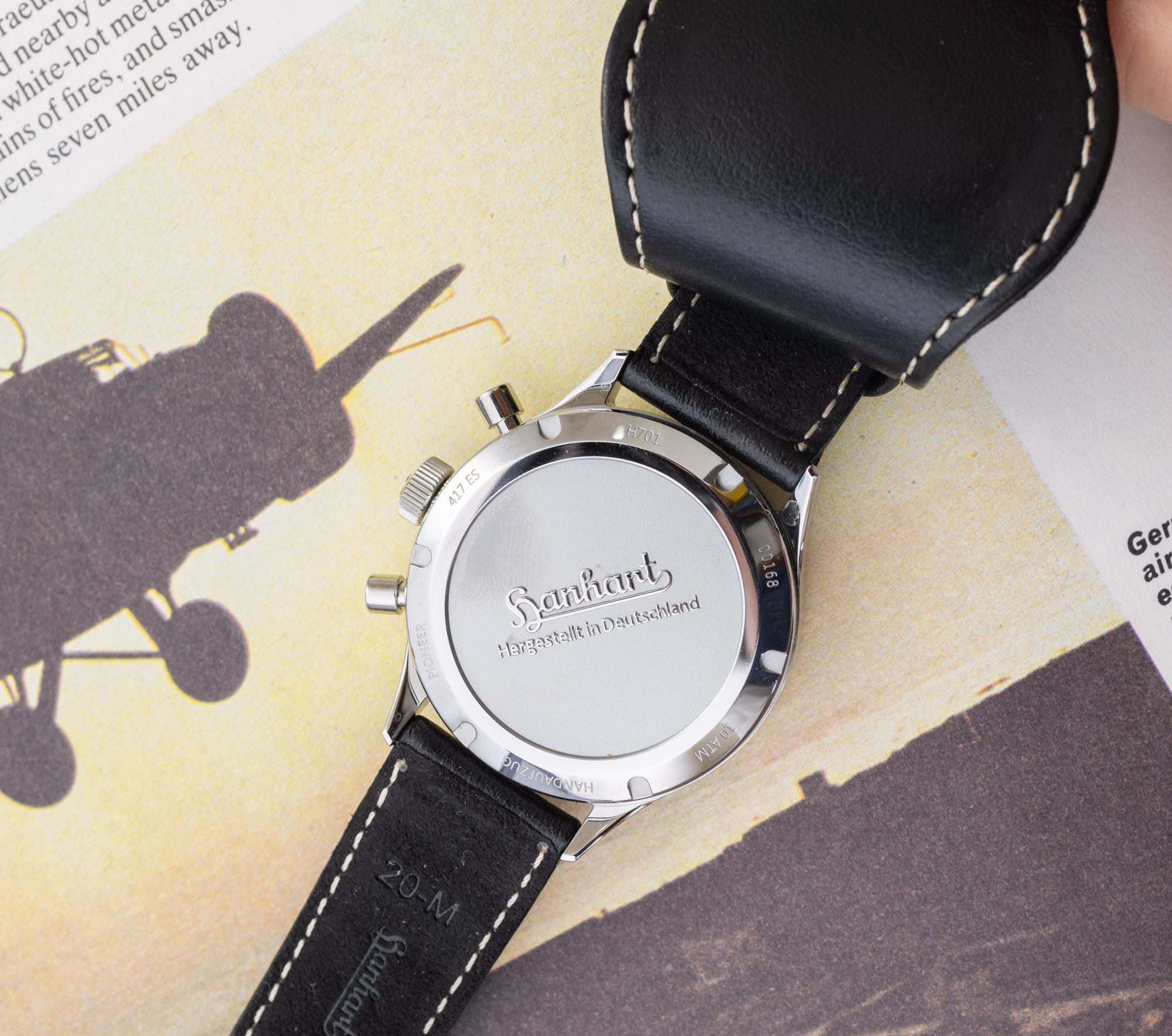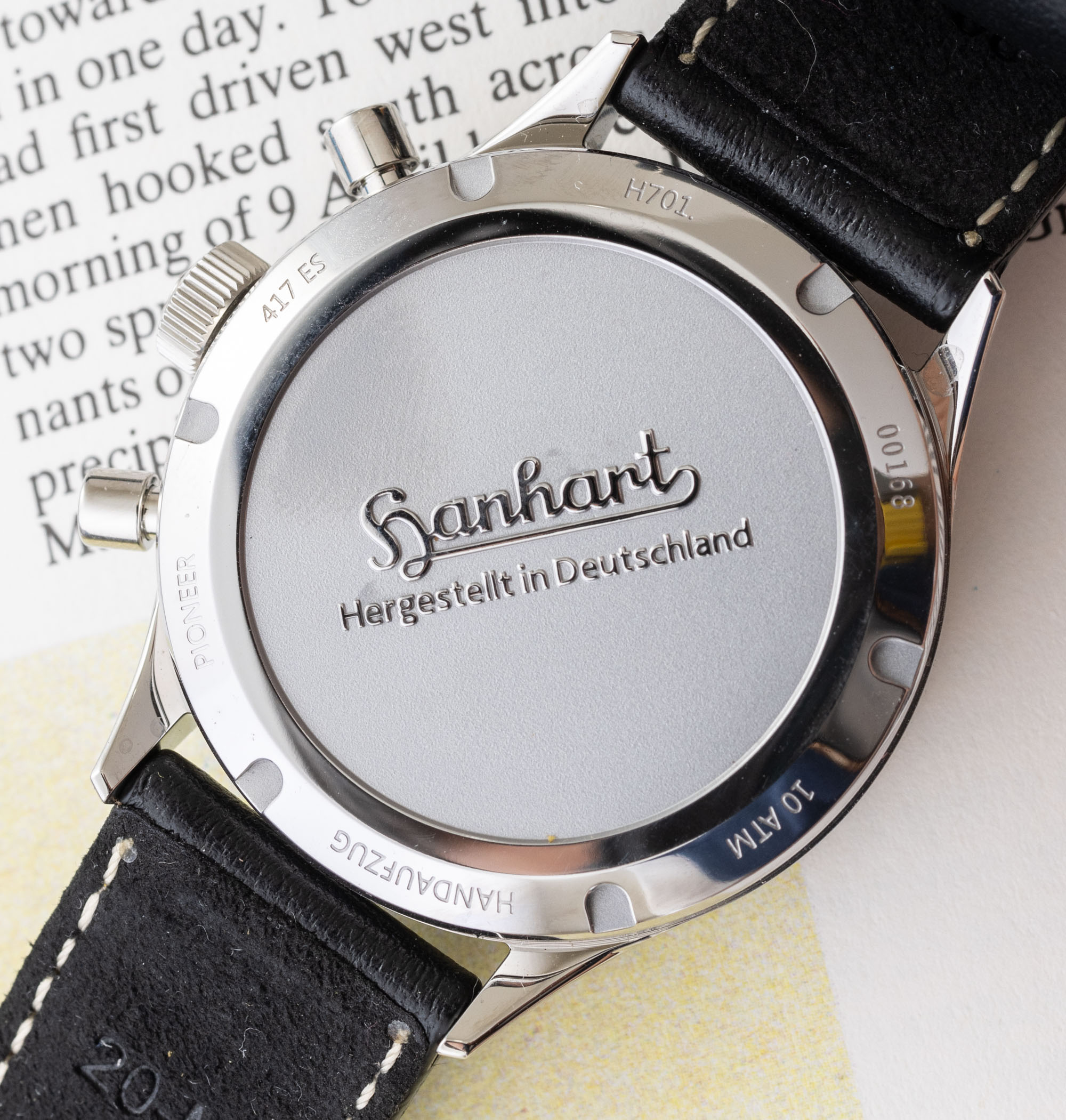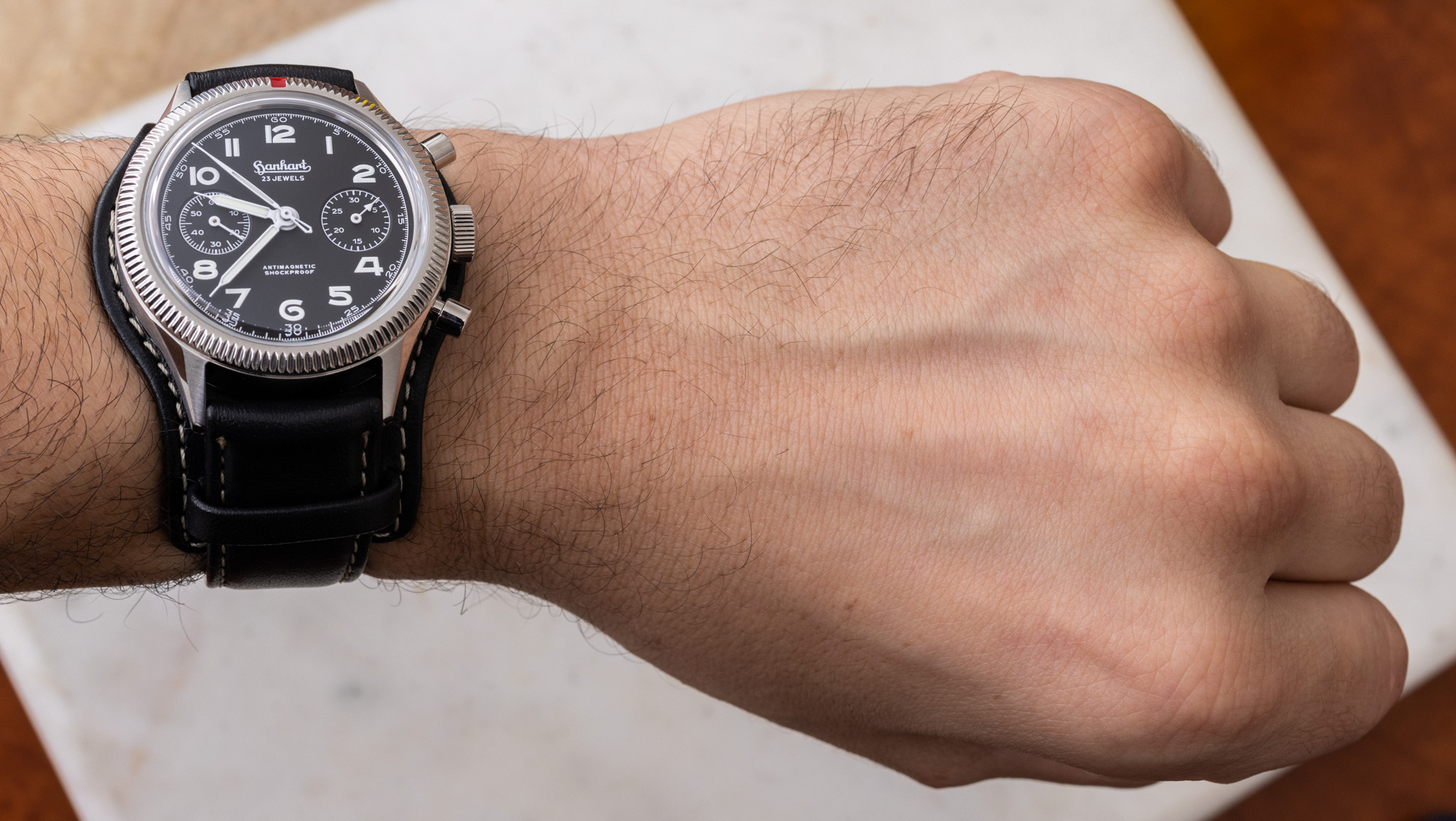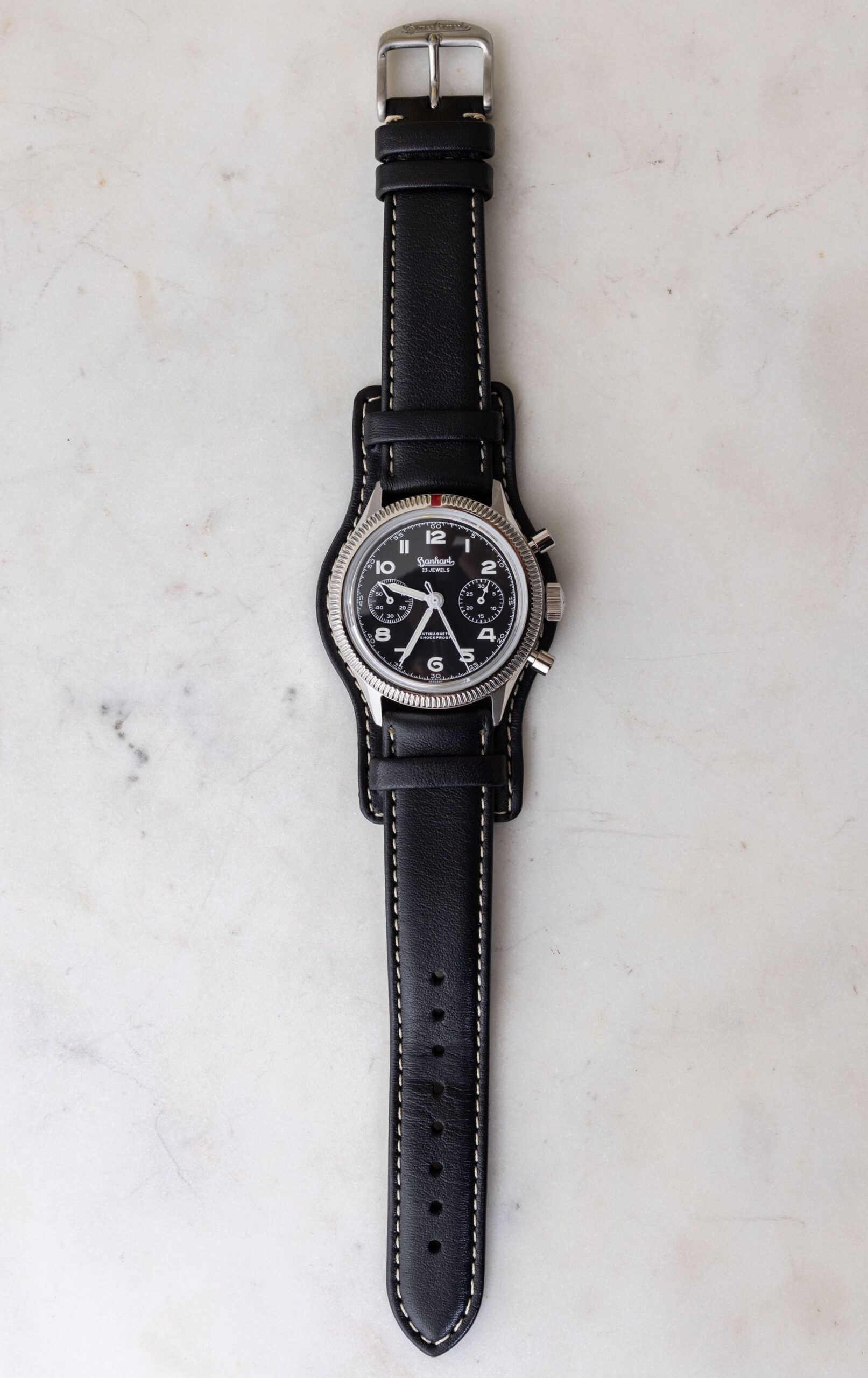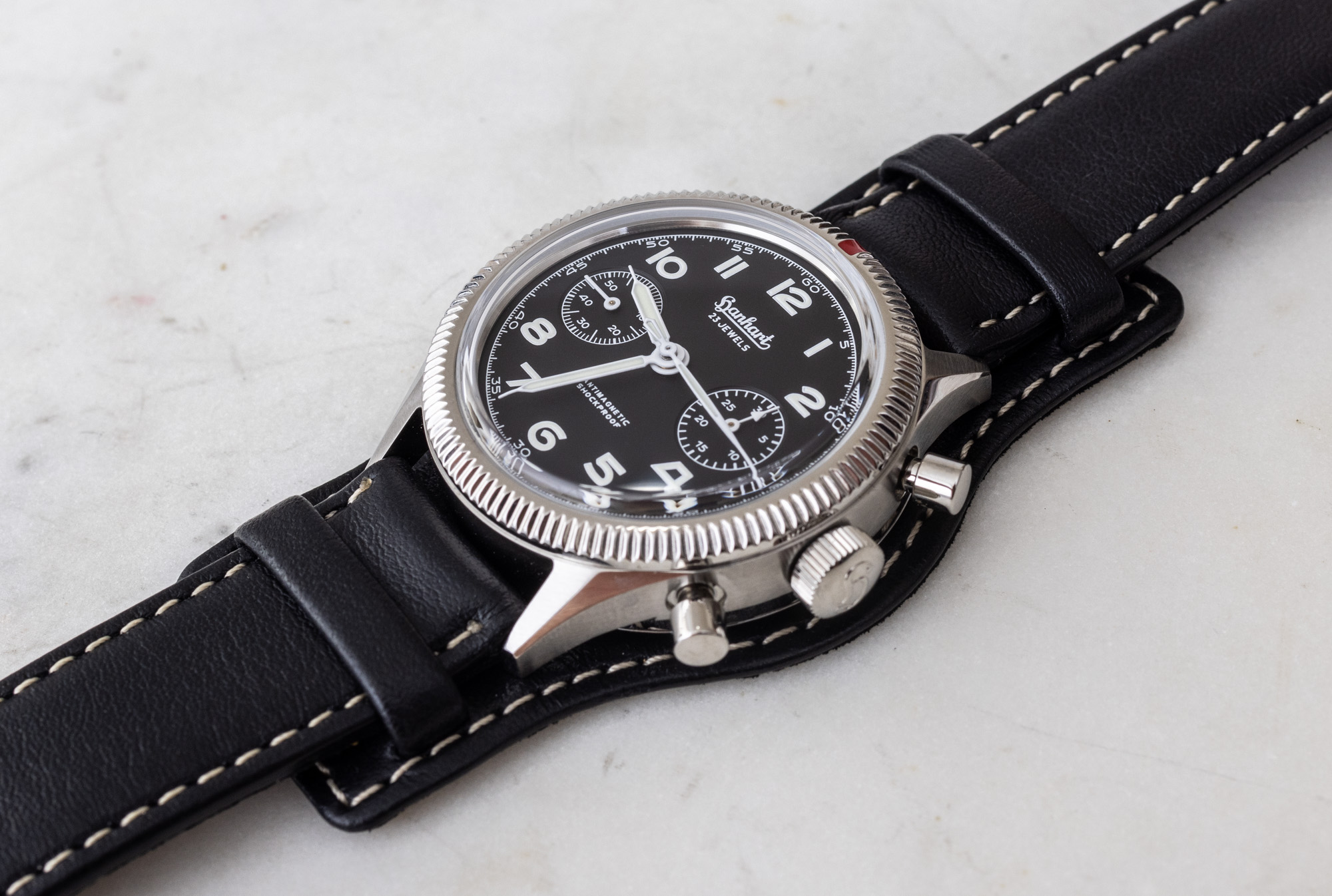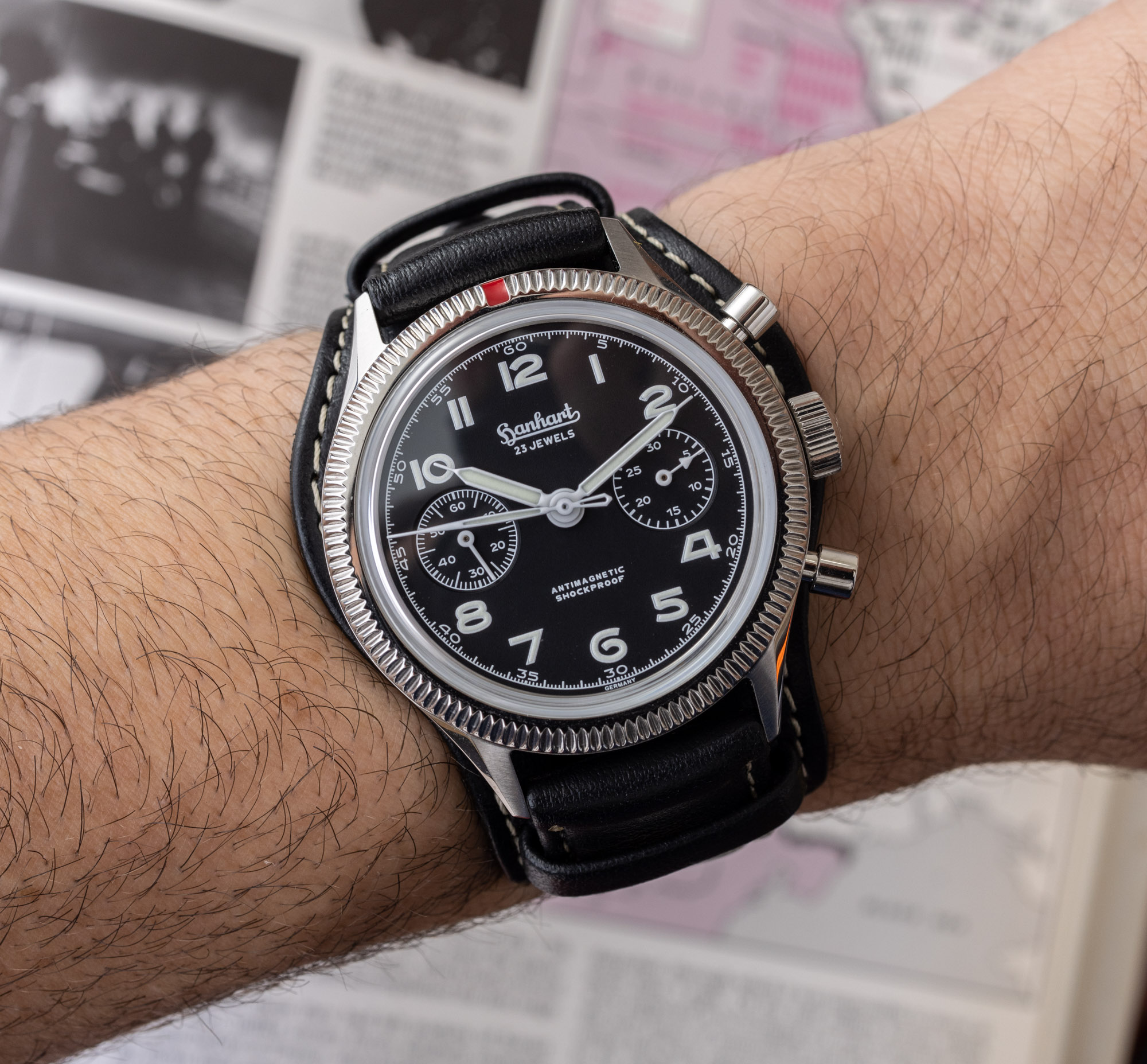
Successful vintage-redo watches can be very satisfying to own and wear, even if I personally am getting a bit tired of the trend for luxury watch brands to focus mostly on the past as opposed to the future. I get the thinking, however, because often a novel design from a smaller brand can take years to gain popularity with audiences. When a brand comes out (again) with a classic, it is able to benefit from existing demand and appreciation for that style. And this is part of the larger context within which German Hanhart released this really satisfying 417 ES 1954 39mm-wide watch that I am reviewing for you today.
Hanhart is one of the traditional German wristwatch makers that produced pilot watches and other timing instruments in the mid-20th century. From about 1954 to 1963, Hanhart produced the origin piece of this redo watch known simply as the 417. The original 417 watches are very rare but follow a common “Type XX” style dial design that has been popularized by a lot of different historic (and modern) timepieces. Simple and focused on utility, this classic aviator watch look has become a hit today among collectors and fashionistas and is one of the timeless sport/military/aviation designs that we celebrate today.
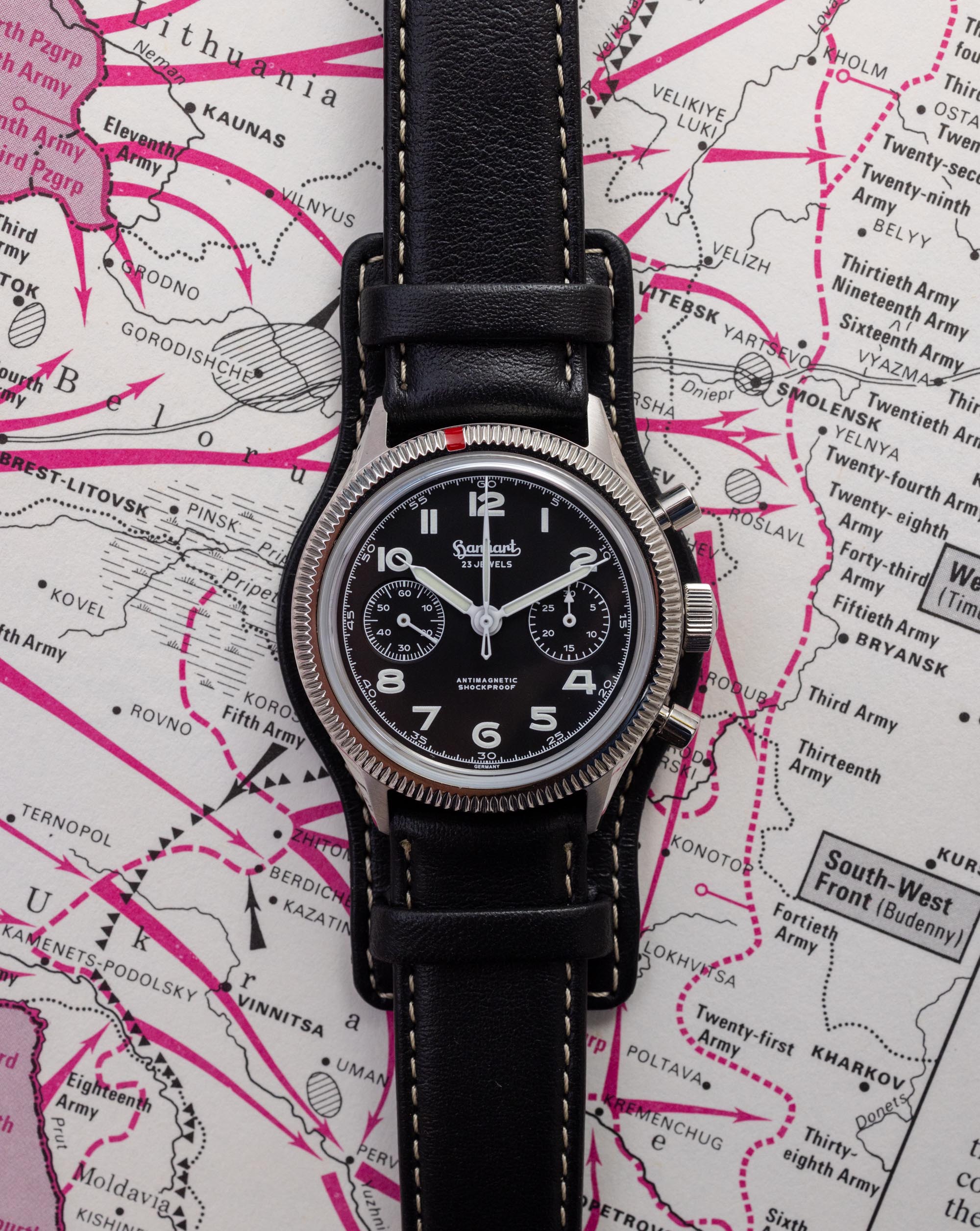
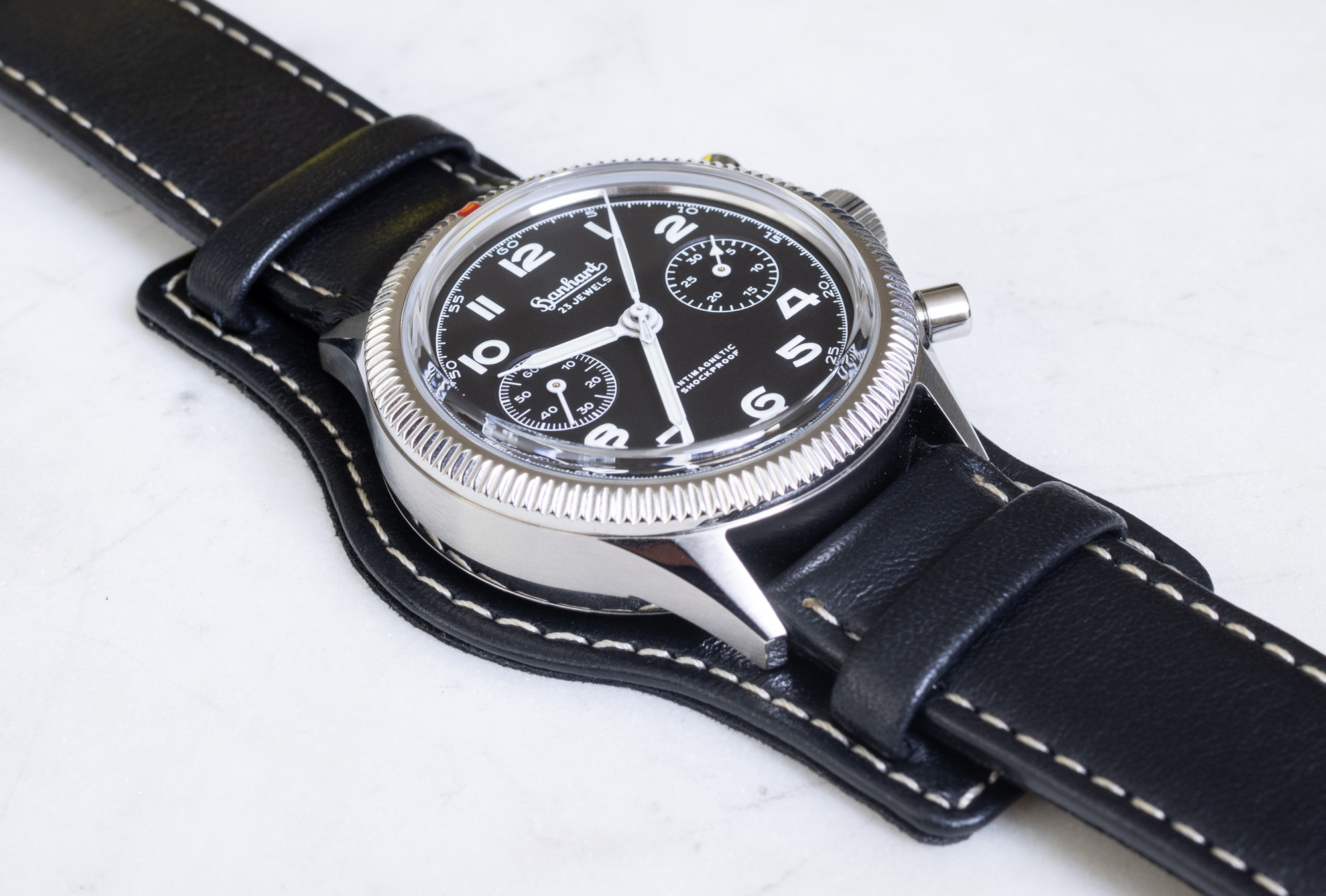
The Hanhart 417 ES 1954 was preceded by a similar model from Hanhart known as the 417 ES. The differences are minor and, from what I can tell, are limited to the size of the case. Hanhart produced the 417 ES as a larger, more modern-sized 42mm wide model, and the 417 ES 1954 was produced closer to the original watches in a 39mm-wide case. The “ES” part of the name refers to the German word “edelstahl,” which means “stainless steel.” That was a big deal at the time, but today, the watch industry has long since mastered the use of stainless steel for watch cases — arguably, the most successful watch case material in history.
39mm-wide is a great size for many watch lovers but is also considered a bit small for others. It really just depends on your taste, style, and anatomy, hence why Hanhart effectively makes two versions of the same watch. What prevents the 417 ES 1954 from feeling too small are two things. First is the relatively high case, which is about 13.5mm-thick. Second is the use of the bund-style strap, which placed a section of padded leather under the watch, fitted to the strap. This extra section can be removed if necessary, but I wouldn’t recommend it since bund straps are both cool-looking and comfortable. Since the bund extends past the case diameter of the watch, it helps the entire composition on your wrist to look a bit larger. Let me once again remark on how comfortable straps like this are to wear.
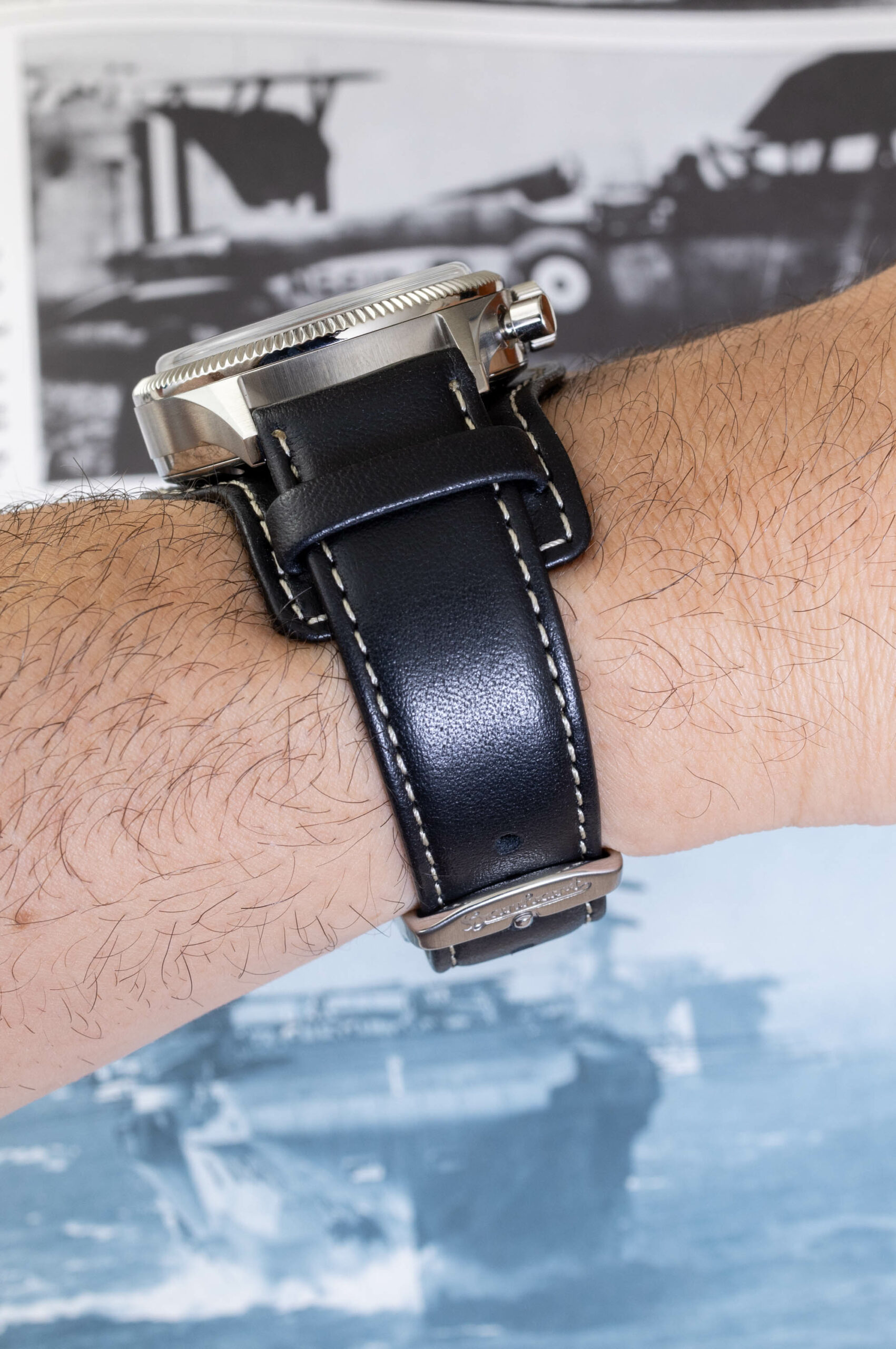
The 417 ES 1954 case also has a 46mm-long lug-to-lug distance and has a dial that is covered with a box-style AR-coated sapphire crystal. The watch case is water resistant to 100 meters, which is actually more than most pilot watches of this type. The case features contrast-polished and -brushed finishing on the steel, and going with the historical theme, the case has a free-moving rotating coined timing bezel with a single red marker. Hanhart points out that the red color market is applied with a material known as HyCeram. This offers more color stability over time, as well as more scratch resistance than a traditional painted mark. These timing bezels are meant to work similarly to those on diving watches but are a bit more simple and basic in their execution.
Hanhart did a lovely job with the dial, which wasn’t very difficult since it was really just supposed to be a faithful recreation of vintage-style Type XX aviation watch dials. Hanhart did, however, make sure the Arabic hour numerals are painted in Super-LumiNova, as are, of course, the hands. The dial features just the time with a 30-minute chronograph. On the dial are reminders that the case offers antimagnetic protection for the movement, as well as an anti-shock system developed by Hanhart.
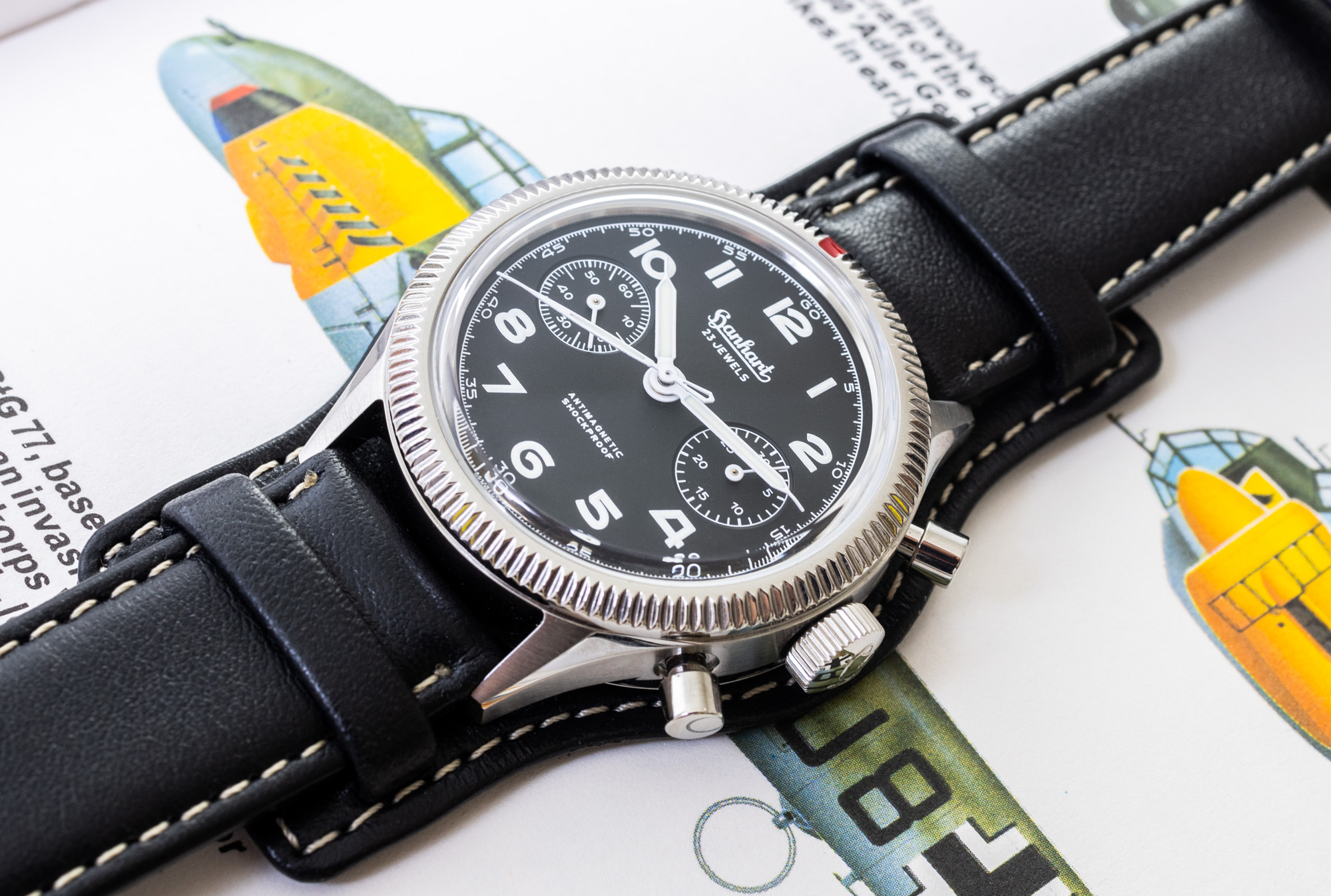
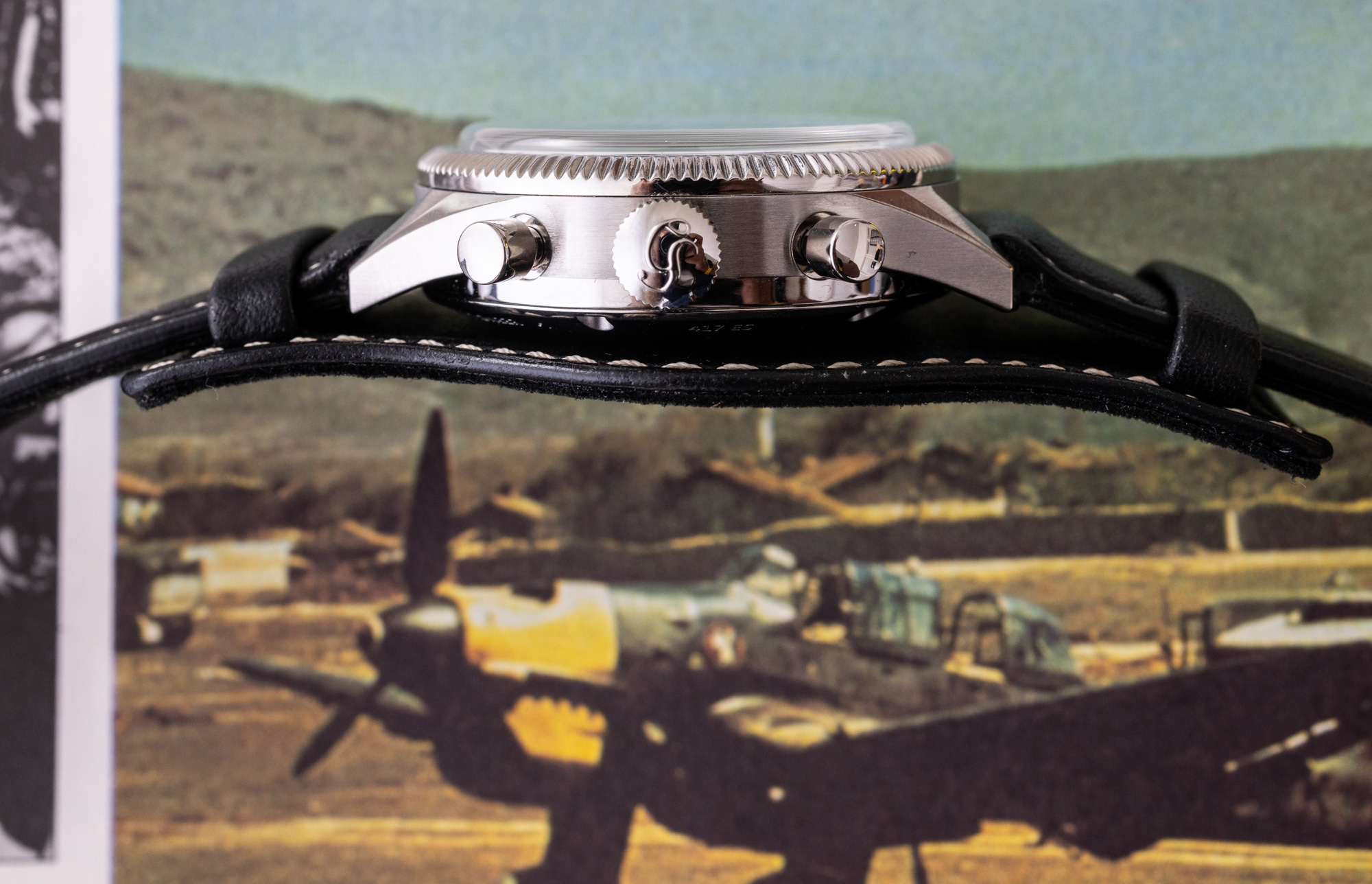
Inside the Hanhart 417 ES 1954 (and the larger 417 ES) is a slick movement not used too often yet from Sellita. It is the Swiss Made Sellita caliber SW510 M manually wound mechanical movement. I will say that with a case this thick, I believe Hanhart probably could have included Sellita’s automatic winding equivalent. That said, having a manually wound movement is more historically accurate and allows for a form of vintage watch charm that would not necessarily exist if this timepiece was that much more modern in its execution. The Sellita SW 510 M movement operates at 4Hz (28,800 bph) and has a power reserve of about 58 hours.
While you don’t see the watch caseback too often (especially if you are wearing the bund strap), the design here is relatively basic (by design, as Hanhart describes it) with more or less just the Hanhart name, though the caseback does have individual serial numbers for each piece. The strap itself is very comfortable in slightly glossy black calfskin leather with white contrast stitching. The underside of the strap is non-slip Alcantara suede, and the straps where they connect to the case are 20mm-wide. It all feels about right for a watch at this price level. But I can also see enthusiasts trying out different straps that would also look very handsome on a watch like the Hanhart 417 ES 1954.
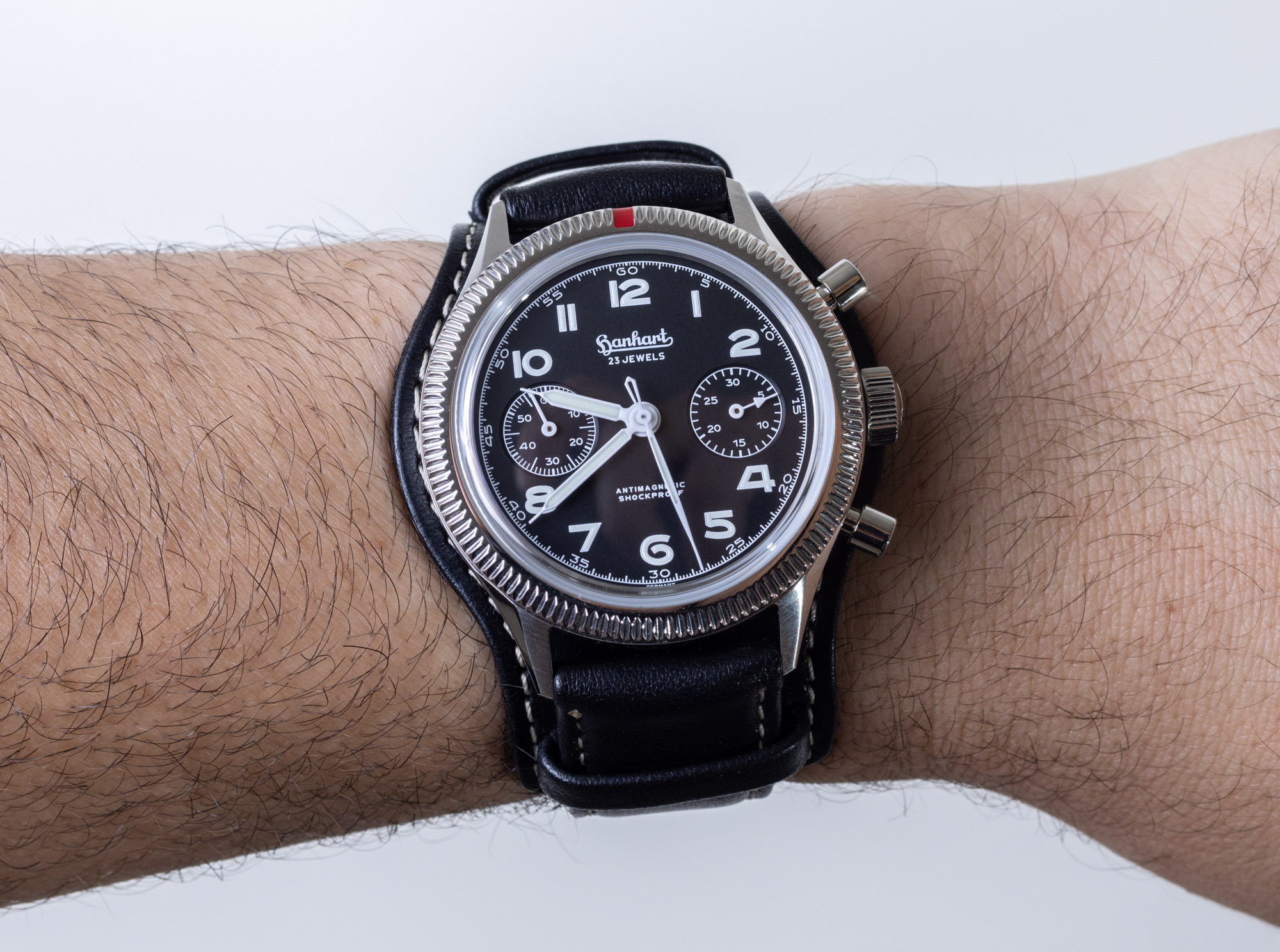
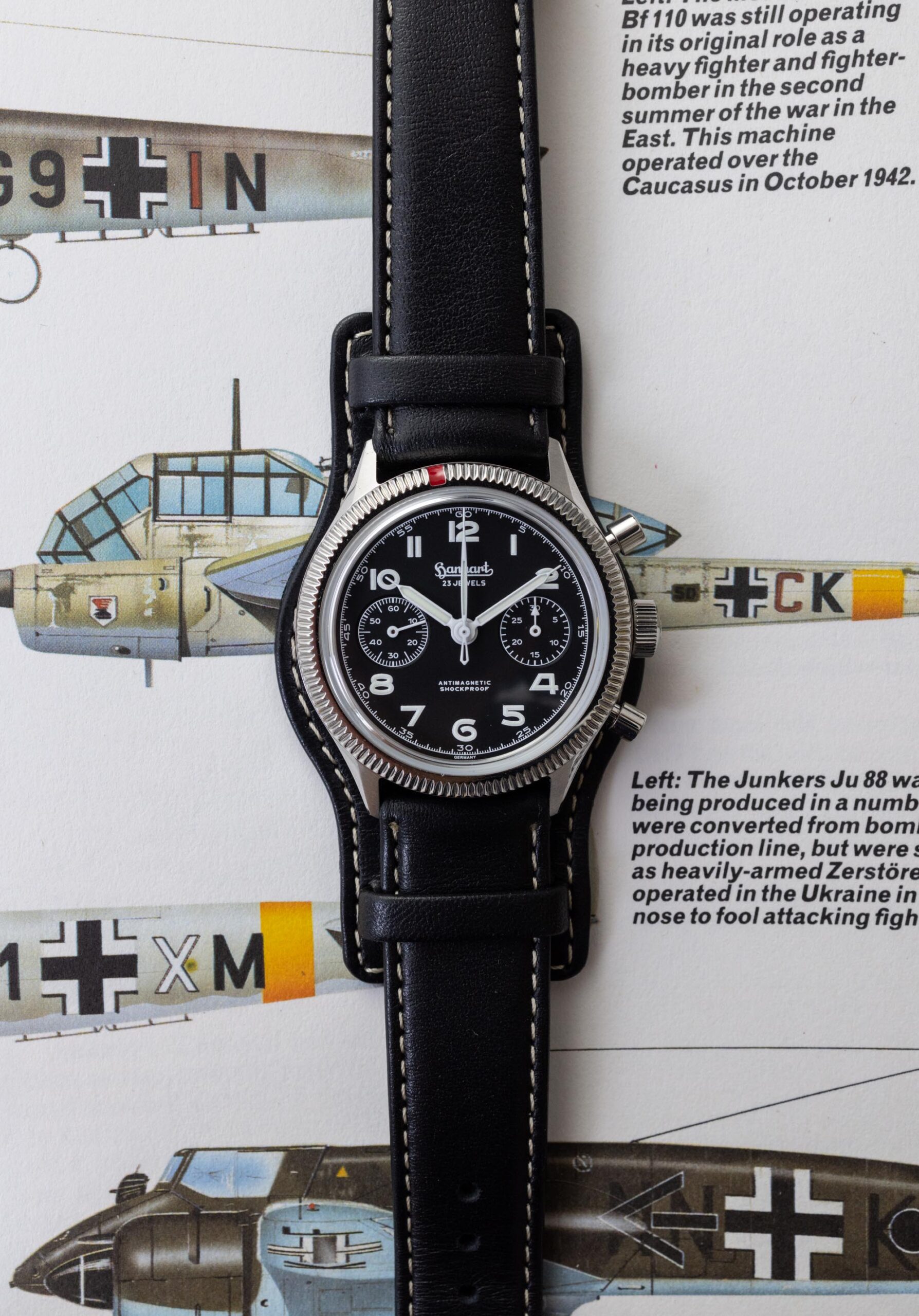
Both the Hanhart 417 ES 1954 39mm and 417 ES 42mm are solid watch choices for those seeking an affordable and historically faithful way of enjoying this particular look in their collection. You can certainly spend a lot more money on other similar watches, or (worse because they are fragile) get an actual historic piece and try to wear that. In my opinion, something like Hanhart 417 ES 1954 is an ideal way of wearing a modern watch that feels like a classic. The two versions have a slight difference in price that I don’t readily understand (Update: the cost difference is related to the more expensive version having a case with a steel alloy that has ferrous/iron material in it, as well as an anti-magnetic dial. These two elements lead to the increased magnetic resistance of the smaller model in order to make it more like the original 1954 model), with the 39mm 417 ES 1954 being a bit more expensive. Price for the very competent and timelessly handsome reference H701.210-7010.5 Hanhart 417 ES 1954 is 1,980 Euros. Learn more at the Hanhart website here.
Necessary Data
>Brand: Hanhart
>Model: Ref. H701.210-7010.5 417 ES 1954
>Price: 1,980 Euros
>Size: 39mm-wide, ~13.5mm-thick, and 46mm lug-to-lug distance.
>When reviewer would personally wear it: When wanting to blend in fashion-wise at a vintage tool event, be it watches, cars, airplanes, or anything else that mixes classicism with professional performance.
>Friend we’d recommend it to first: Fan of traditional military pilot watches that wants a faithful recreation of an iconic look in an enthusiast-grade, albeit relatively affordable package.
>Best characteristic of watch: Handsome looks. Well-made construction. Competent movement. Very comfortable to wear on the wrist. Cool bund strap. Decently priced.
>Worst characteristic of watch: Caseback design is a bit simple. Easy to confuse the two similar 417 ES models.

